UK: Himalayan Grizzled Hawkmoth
Pseudosphinx grisea Hampson, [1893], Fauna Brit. India (Moths) 1: 104.Type locality: Kulu [Himachal Pradesh, N.W. India].
Holarctic; western Palaearctic region. Pleistocene refuge: Monocentric -- Turkestan refuge.
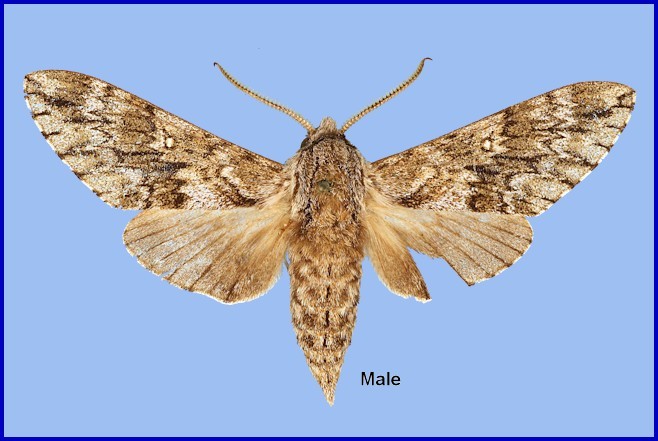
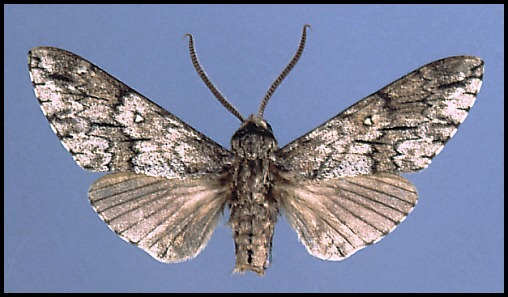
Wingspan: 50--64mm. Few specimens are known, although Ebert (1969) states that it is not uncommon in eastern Afghanistan. Some individuals from colder and/or wetter localities are darker than normal.
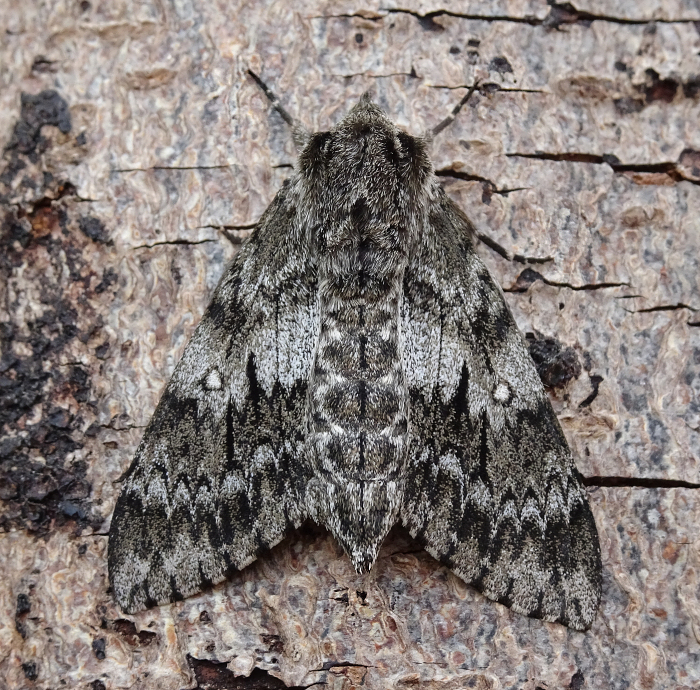
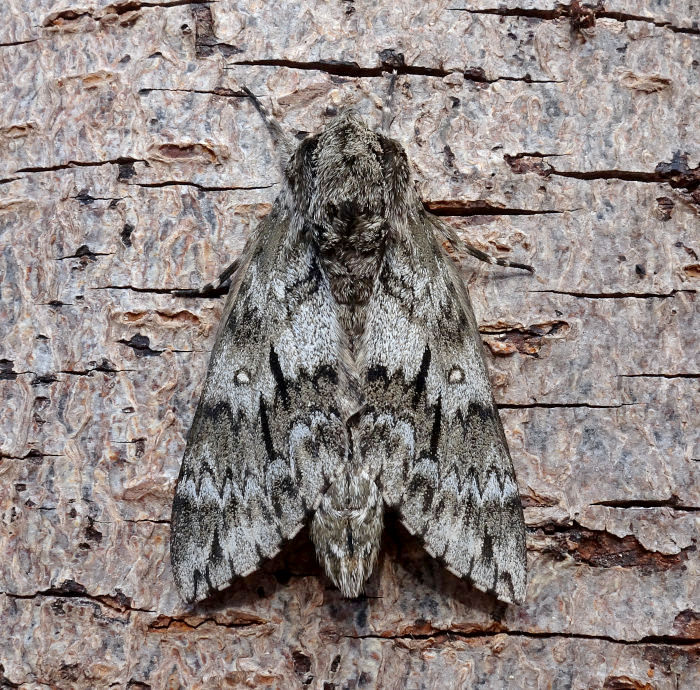
An inhabitant of light, temperate montane forest, including juniper (Juniperus) woodland, as well as riverine vegetation. Very few females have come to light.
Adults start to become active as soon as night falls, but are only active for short periods; females will call/scent early on the first night. Pairing is a short affair, with the male remaing fully alert during this process, with wings held aloft at 45 degrees. Egg-laying commences straight after separation that same night. Most eggs are deposited over 2-3 nights. Both sexes do not feed, and are active even under quite cool conditions.
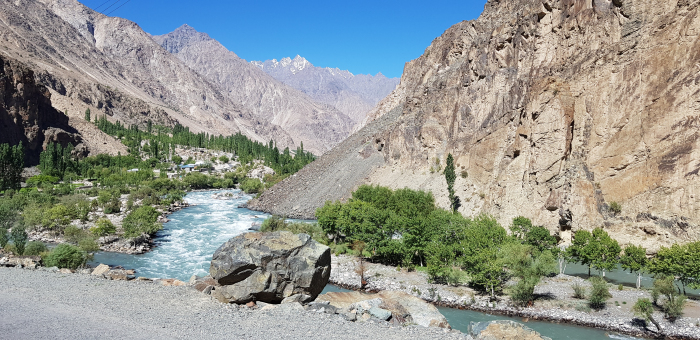
Early April, late May/early June to August, and (sometimes) late September to early October, depending on altitude. Derzhavets (1984) states that this species is bi- or trivoltine.
OVUM: Distinctly oval (2.0 x 1.5mm), clear pale green or blue-green to start with, but becoming slightly opaque with a dorsal depression (Degtyareva, Stshetkin & Stshetkin, 1977; Pittaway, pers. obs. 2022).
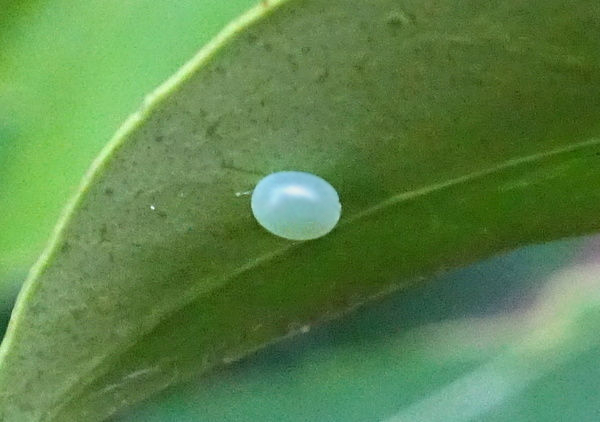
LARVA: Full-fed: 43--56mm.
The newly-emerged larva is yellowish-green, 5-8mm long, with a 2mm dark brown/reddish-brown horn, two faint whitish dorsal lines, a roundish head, and anal claspers which project caudad. In the second instar the 12-15mm larva becomes very like that of Laothoe populi (Linnaeus, 1758), with the head becoming triangular, the 4mm horn yellowish-green, and the finely tubercled body pale green with a pronounced yellowish-white dorso-lateral line and seven oblique lateral stripes on the abdomen. The third instar is similar to the second.
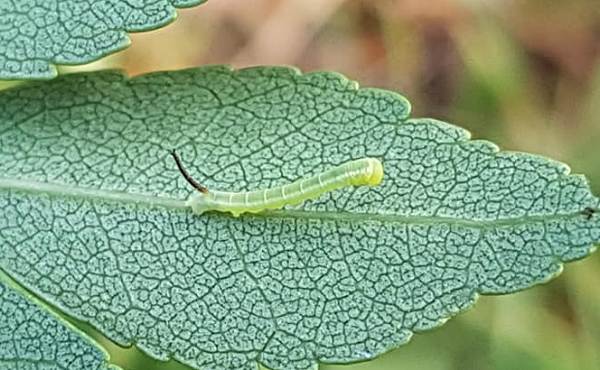
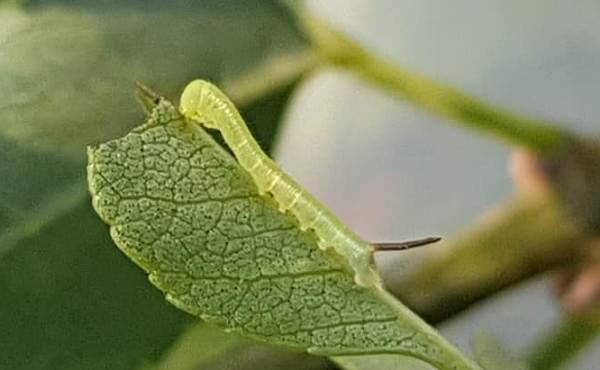
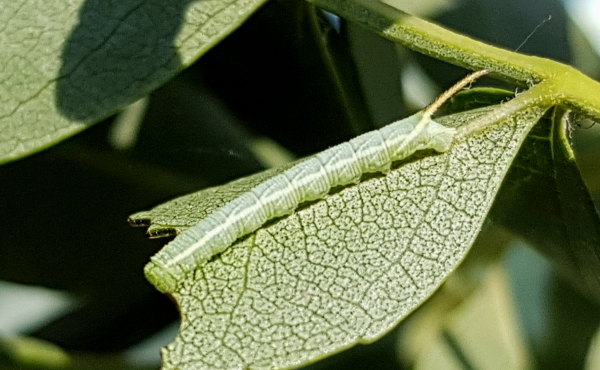
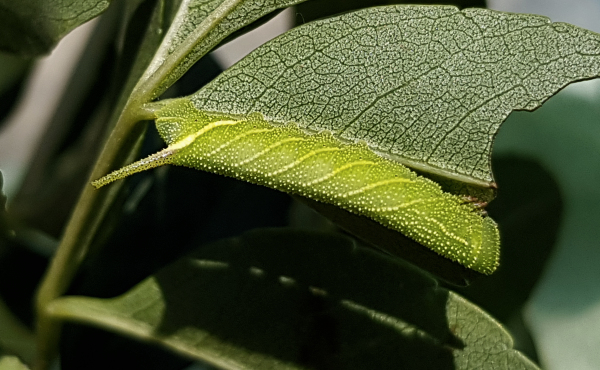
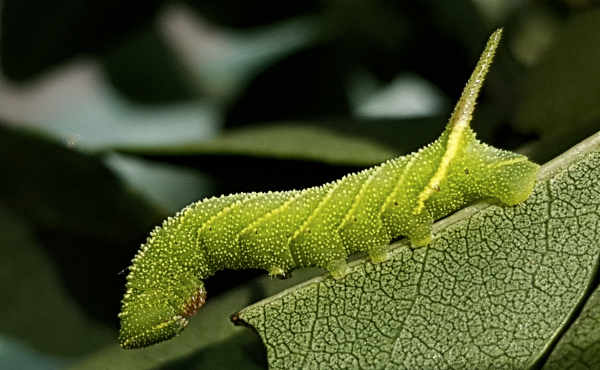
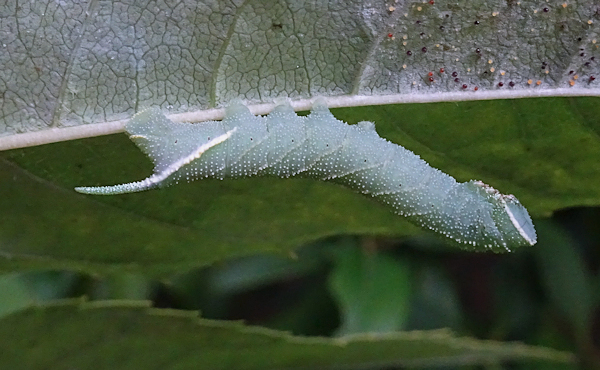
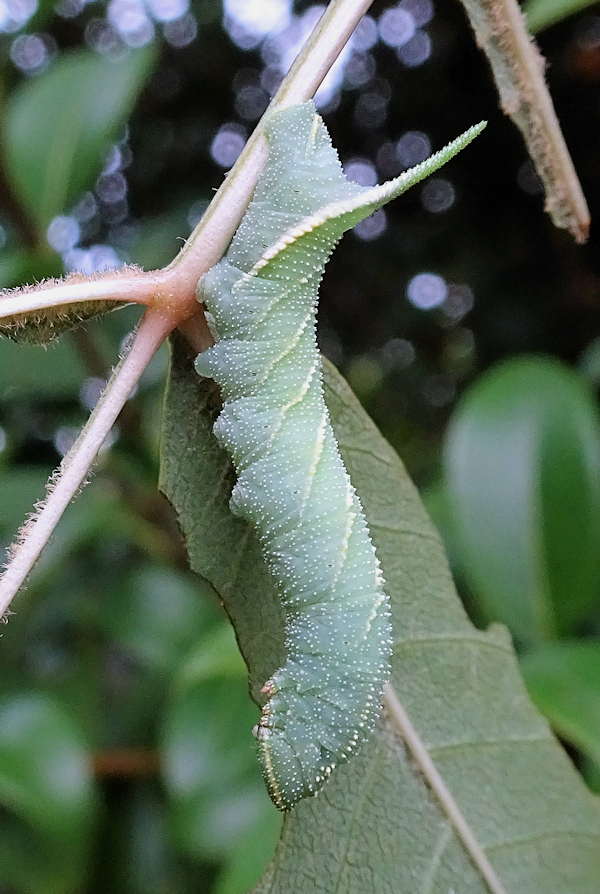
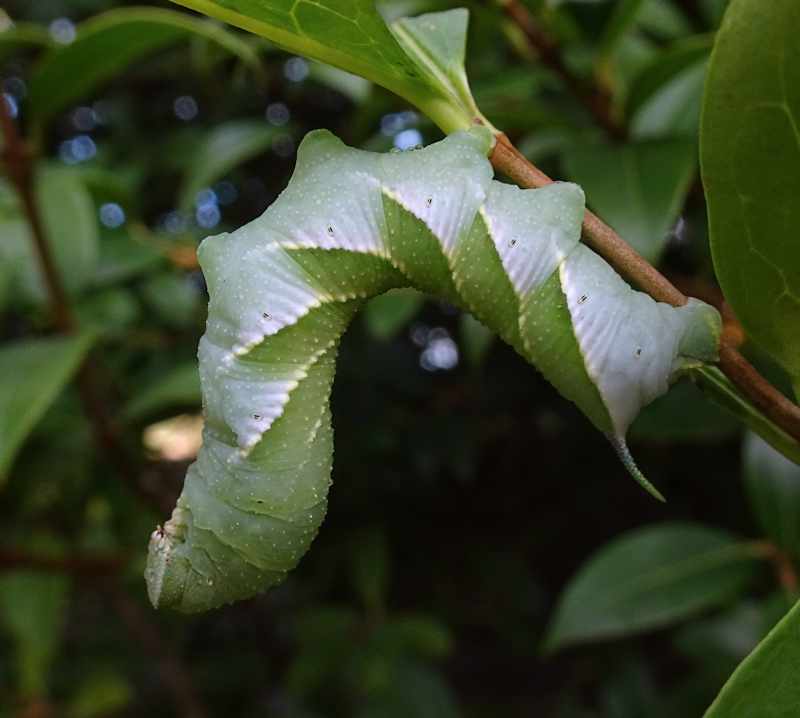
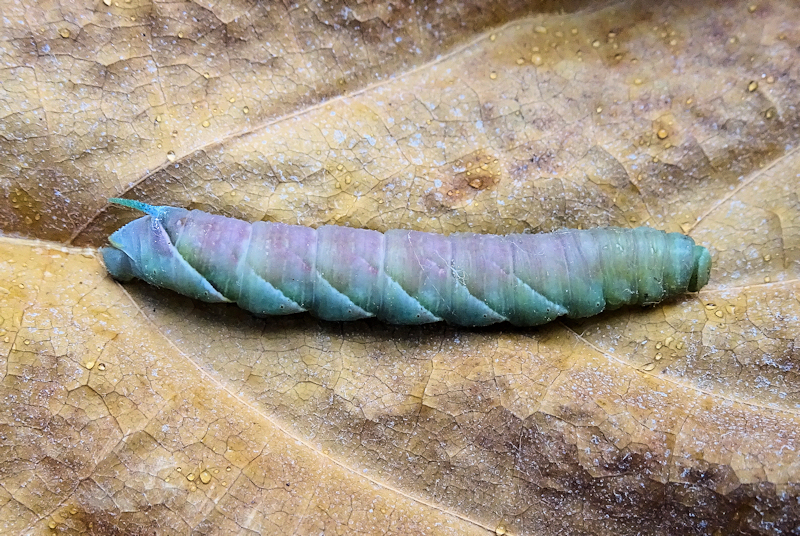
In the fourth instar green form the body is apple-green and densely covered with fine yellow tubercles. Laterally there are seven yellow, oblique abdominal stripes, with a similar dorso-lateral line running from the head back to abdominal segment three. The triangular head is green with yellow cheeks, the true legs rosy, and the horn greenish/bluish-yellow with a green tip and fine yellow tubercles. In the bluish-grey form the body is bluish-grey and densely covered with fine white tubercles. Laterally there are seven, thick, white, oblique abdominal stripes, with a similar dorso-lateral line running from the head back to abdominal segment three. The triangular head is bluish-grey with white cheeks, the true legs rosy, and the horn greenish-white with a green tip and fine white tubercles.
The fifth instar is very similar, but with the body becoming more bluish-grey, especially below the spiracles. All forms retain or develop an apple-green blush dorsally above the oblique abdominal stripes, which can be quite intense in some. The horn becomes more bluish. The oblique abdominal stripes retain some darker green edging frontad, and may even develop additional red edging. The head develops dark side stripes, which are grey in most, black in some, and may even develop red edging. In some individuals all the fine body tubercles can be white rather than yellow. As pupation approaches the whole body takes on a brownish-purple hue, which is much more pronounced dorsally (Degtyareva, Stshetkin & Stshetkin, 1977). This transformation nearly always takes place at night, with the larva decending from the host and selecting a pupation site as quickly as possible under the cover of darkness.
Hostplants. In Tajikistan on Fraxinus sogdiana [syn. Fraxinus potamophila] (Degtyareva, Stshetkin & Stshetkin, 1977). [In captivity, will feed on other species of Fraxinus, as well as Ligustrum.]
PUPA: 28--32mm. Glossy reddish-brown to dark brown with reddish-brown abdominal segments. Cremaster 1.5mm, cylindrical, with a bifurcated tip. Similar to that of Smerinthus ocellatus (Linnaeus, 1758), but more elongate. The overwintering stage (Degtyareva, Stshetkin & Stshetkin, 1977).
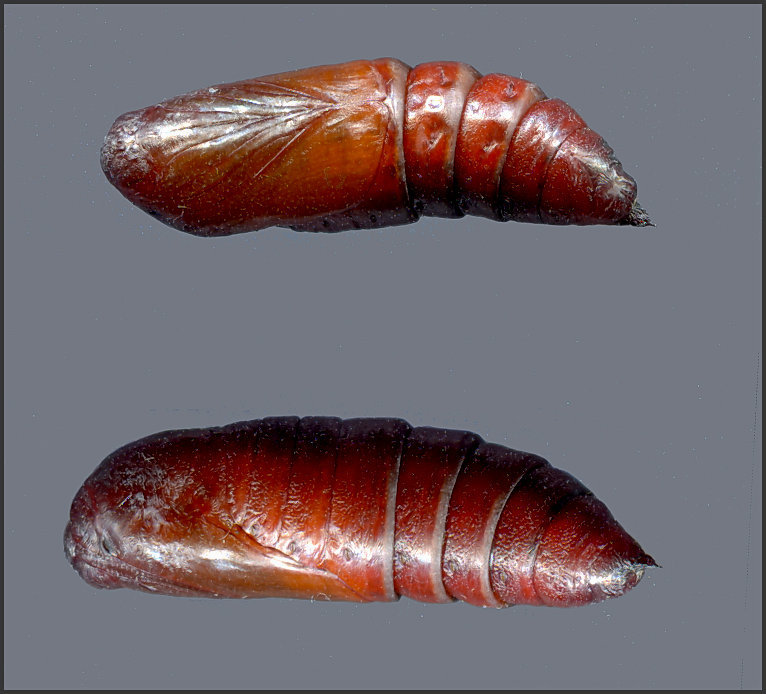
Unknown.
At present known only from the temperate Himalayan foothills of Himachal Pradesh, India, northern Pakistan (Danner, Eitschberger & Surholt, 1998; Rafi et al., 2014), Kashmir, Afghanistan (Wiltshire, 1961; Ebert, 1969), Tajikistan (Derzhavets, 1984; Dubatolov, [1999]; Eduardo Marabuto, iNaturalist 2022), and Uzbekistan (Urgut District, Zarafshan valley, Samarkand region (Omonov, Rahimov, Askarova & Khomidova, 2023) and western Gissar Mountains).
Wiltshire (1961) appears to have misidentified his example from eastern Afghanistan (Nuristan Province, Bashgal Valley, 1100m, 9.iv.1953) as Dolbina exacta Staudinger, 1892, a very similar species confined to East Asia.
Extra-limital range. None.
None.
 Return to species list
Return to species list